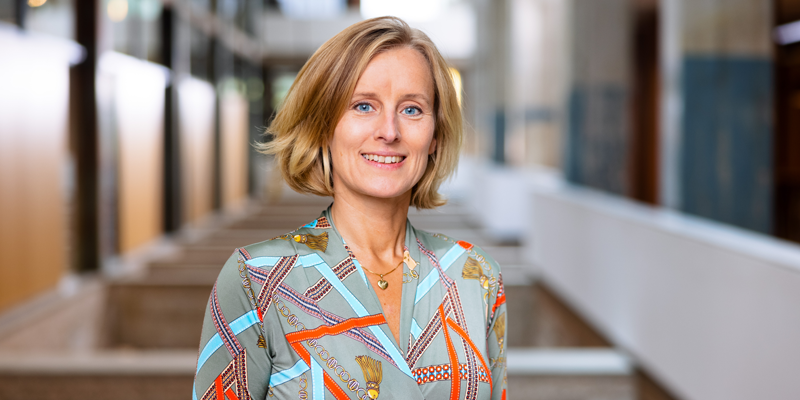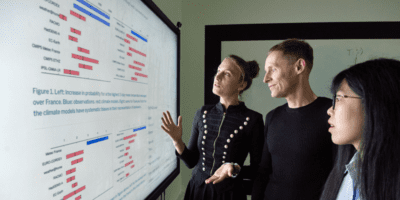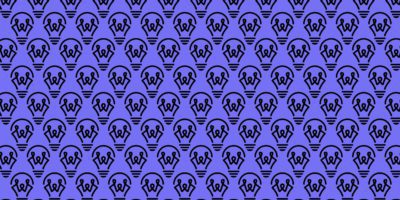Charlotte Kjellander is a senior scientist integrator at Holst Centre, part of the Netherlands Organisation for Applied Scientific Research (TNO), where she leads the wearable electronics team, being responsible for technical advancements of next-generation smart plasters and smart clothing. She is experienced in industrial and open innovation research within international and multidisciplinary teams. Charlotte has recently been named in the InspiringFifty in DeepTech Benelux, an initiative run by accelerateHER, a solutions-based organisation for addressing the under-representation of women in the technology industry to drive business growth.
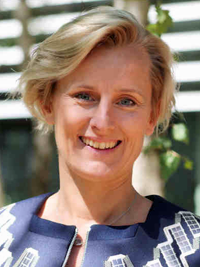
“Diversity stimulates discussion and openness for new ways of thinking. And it also encourages us to review our own thought patterns, which is so important in science.”
Creating exciting new products
I was born and grew up in Sweden, having studied chemical engineering. I have been in science my whole life, so it’s in my blood. After completing my chemical engineering training, I went to the Netherlands to do a PhD in physics and chemistry, and I never left.
I worked on new materials, like liquid crystals, and how to self-align these materials to make a switchable colour display. When I finished my PhD, I wanted to experiment working in industry. So, I stepped over to Philips’ material analysis department.
After a year, I had the opportunity to join the Netherlands Organisation for Applied Scientific Research (TNO) at the Holst Centre. There, I was able to study displays again, but on a totally different aspect of it, now by making them printable and flexible. I then made a total switch in my career and went to work at a production company making cladding, producing façade decoration of houses and surfaces for kitchen tabletops. We were working with a state-of-the-art production method that allowed me to use my technology skills and scale up these production methods and to get the materials out on the market.
At the time, I also started to invent interactive materials, interactive panels, solar panels. This brought me back to this excitement of creating new things from scratch, which brought me back to TNO and the Holst Centre, where I now develop the next generation wearables smart patches, smart clothing, for health applications.
My day-to-day work
At Holst Centre, I lead the technical development of the wearable electronics team, together with clients, who we refer to as partners, we research and develop medical wearable devices using printable electronics materials. Our focus areas are medical health patches and smart clothing.
On a day-to-day basis, I prepare our strategy for the coming years, interact with current and future clients, lead projects, coach team members, plan trials on humans, prepare protocols, analyse data, write patents, reports and scientific publications, lecture and present at fairs and conferences. (Last summer I even made a vlog about my work and living in the technology region of Brainport Eindhoven, to help attract talent: https://brainporteindhoven.com/int/for-you/work/tech-xperience/charlotte-kjellander)
The future is here
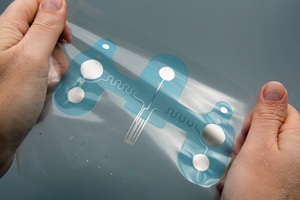
One of the R&D prototypes we created is a smart plaster. You may not know what it is, but a smart plaster does much more than what we are used to today: It measures your heart functions, your heartbeats, how you breathe, and it combines all this data to send to your physician. Now, instead of having to lay in a hospital bed, wired up with electrodes, you can put a small piece of plastic on your chest, which you hardly notice. Then you just walk around at home, doing your normal things — having a shower, doing sport, whatever, and your doctor can monitor your health remotely.
We are working on many other cool things. We are designing floors that receive energy when you step on them and send out the information to say that you are stepping there. You don’t need any cables, it’s autonomous. There is also a project we are working on together with fashion tech designers to make a shirt that can communicate with you.
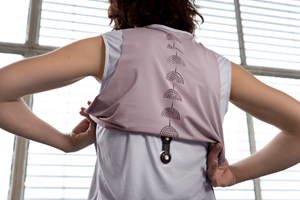
MYSA is a “relax shirt” designed for daily use that gives breathing guidance and reminds its wearer of taking regular breaks. During these breaks, MYSA creates a moment of relaxation by guiding the wearer through a calming breathing exercise to encourage the wearer to breathe more deeply and reduce stress levels.
That’s a concept that we’re now trying to spin off into a start-up company to get this out on the market. Because the technology is thin and comfortable it’s easier to make these devices wearable, and, with the help of a fashion designer, you can also get the right fit and the right combination of materials.
COVID times are hectic times
COVID meant hectic times in the medical wearables space, especially for remote monitoring devices which are promising to reduce the need for hospital visits. However, there is high pressure for solutions that can go on the market NOW, which overshadows the developments for future concepts (market-ready in ten years from now). At the research institute TNO, we naturally work on the latter category.
There is also increased attention for preventive care, to stop hospitals from becoming overwhelmed in times of the pandemic. Therefore, our smart plasters and smart clothing developments got more attention and public impact, e.g., as gained by our prototype for MYSA.
On a more personal basis, with Holst’s work from home policy, I noticed I took on more responsibility, among my team members but also for myself. I liked that. I’ve seen team members grow by making it their responsibility to deliver during COVID times too.
Openness for new ways of thinking
Diversity stimulates discussion and openness for new ways of thinking. And it also encourages us to review our own thought patterns, which is so important in science. To me, diversity boosts curiosity toward the ideas of others, no matter what background, gender, or training.
For TNO at the Holst Centre, we work on research and development projects with partners (our clients) over the whole world, and we deliver research in funded international, EU, and national research projects. Therefore, it is very important that our team is diverse. The main goals of the institute are to make society healthier and safer and ensure a sustainable and strong economy.
In my closest working group at the Holst Centre, out of 35 people, there are around ten nationalities, aged between 18 and 65 years old, from several educational backgrounds, scientific disciplines and levels.
Importance of the International Day of Women and Girls in Science
The International Day of Women and Girls in Science is an excellent medium to stimulate curiosity for science — the ‘how’s’ and ‘why’s’.
Also, it is important to find all types of role models, in terms of gender, background, religion, skin colour, education… That makes science better.
How Womanthology readers can help
The most helpful thing Womanthology readers could do to support my work is by telling me what their five biggest problems are because I would like to start up a new business solving meaningful problems whilst improving vitality and health. I am very curious to hear the voices of a professional community of women, so what are your problems? Let me know!
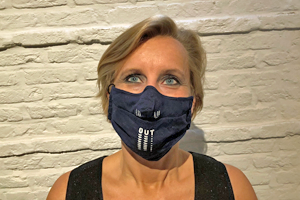
It would also help to expand my network so that I can reach interested partners, clients, investors for start-ups and for the development of next-generation wearables.
It is also important for people to actively support research by volunteering in human research trials of novel developments, such as health monitoring patches, preventive clothing, etc. (when possible/suitable/applicable, of course).
Smart clothing for improved vitality
I will soon be accelerating a TNO spin-off initiative in smart clothing, for improved vitality: breathing guidance garments. This is a joint project with my good friend Pauline van Dongen, an extremely talented fashion tech designer.
I will also explore the commercialisation potential for a privately owned IP on a new facemask design I mentioned. This is a novel design that prevents inhalation of exhausted air.

